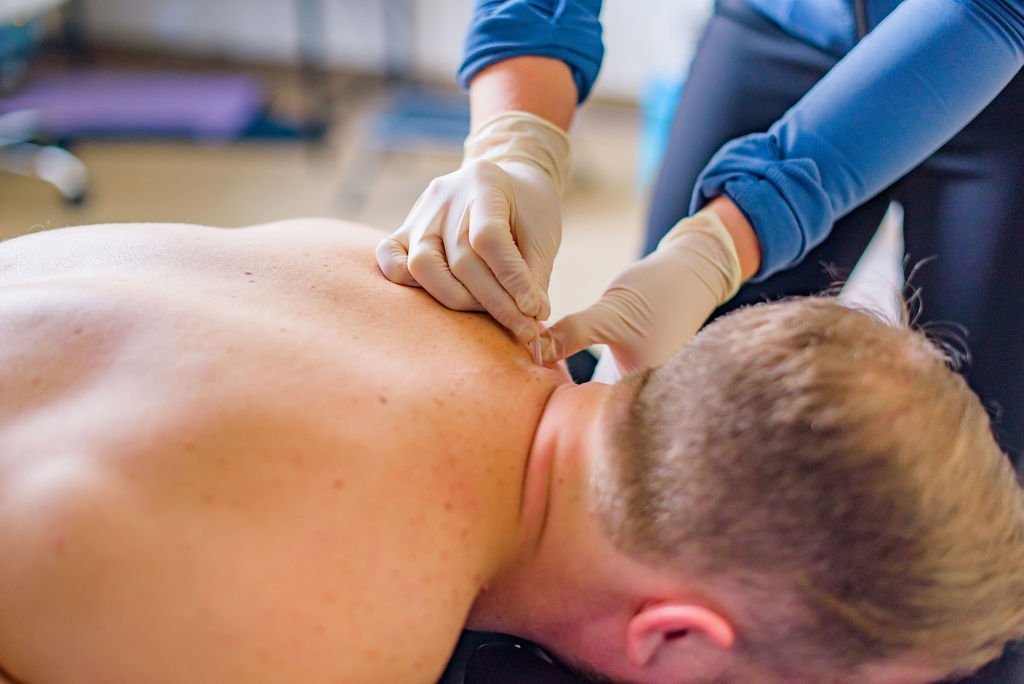
Dry Needling Treatment in Portsmouth, NH
Dry Needling is an effective way to treat muscle and joint pain.
Dry needling is a specialized technique that uses thin, solid filament needles to release trigger points or muscle knots.
This stimulus helps to “re-set” the area to allow the muscle and nervous system to function as it normally should.
Dry needling in combination with other manual therapy techniques, and corrective exercises allows your body to move the way it was designed to.
If you are experiencing referred pain as a result of your trigger point, dry needling will resolve that pain.
Unlike traditional massage techniques, the results of dry needling last longer.
Things to know about dry needling treatment
It’s not acupuncture: the solid filament needle is the same, but the technique and philosophy is very different. Rather than working with meridians and energy flow of Chinese medicine, trigger point dry needling is working with specific muscles and pain associated with those muscles.
It’s only one part of therapy: dry needling is effective for releasing muscle tension, but if it is not followed up by corrective movement exercises and addressing the root problem, you will not see long lasting results.
It may take more than one session: depending on the severity or chronic nature of your condition, you may need more than one treatment session. Most patients require 2-4 sessions (although it is great when one session is all we need!)
Trigger Point Dry Needling Frequently Asked Questions
-
Due to the solid filament needle being thin, you should barely notice it going into the skin. What you will feel is the sensation of when the needle hits the targeted area. When a successful needling is performed, you will feel a muscle twitch, that can feel similar to a “charley horse” sensation. This can vary in intensity and will last for only a moment.
-
This varies person to person. Some walk out of a session feeling better than when they came in. Others can feel sore in the muscle group that was needled, as if they had a very intense massage or did a big workout with that muscle. This soreness improves with increased blood flow and movement throughout the day. Symptoms tend to last no more than 24 hours.
-
Most needles we are exposed to at doctors’ offices are a hollow needle in order to either inject a fluid into you, or draw fluid from you. The solid filament needles used in dry needling are meant to simply stimulate the trigger point that lays within the muscle. No fluid exchange is present, making this a dry method.
-
Dry needling is not for everyone. If needles are not your thing, we can still achieve the same results without them. Dry needling can often get us to the results in less time and fewer visits, but does not need to be a part of your treatment plan.
-
Yes. Every physical therapy session includes all services. We utilize whatever modality and techniques we believe you can benefit from the most.
-
Yes. Working out before a session is no problem. Working out after a session can be beneficial for you, especially if you can move better. We typically advise not maxing out in weight or trying an exercise you have never done before after a dry needling session. A mild to moderate workout after a session can be helpful in flushing out the soreness that can be associated with dry needling.


